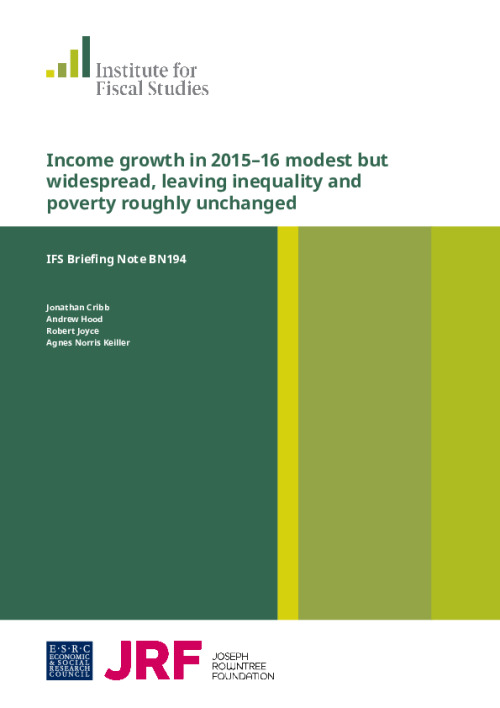The Department for Work and Pensions (DWP) has today published the latest official statistics on household incomes, covering the financial year 2015–16. IFS researchers have summarised the headline trends observed in the new data and placed them in historical context in order to understand better changes in living standards in recent years.
The full analysis with graphics can be found here.
Key findings are:
Average household incomes
- The latest data suggest that median household income grew by 1.4% in 2015–16 after adjusting for inflation, leaving it 5% higher than in 2013–14 – a welcome improvement on the recent past. But it is just 3.7% above its pre-recession (2007–08) level.
- The record for those of working age has been worse than that, with almost no income growth since 2007-08 on average. Median pensioner incomes on the other hand are around 10% higher than they were in 2007-08.
Income inequality
- Income inequality was roughly unchanged in 2015–16, remaining lower than on the eve of the financial crisis, and around the same level as in 1990. The fall in inequality just after the recession was driven by benefits rising faster than earnings. During the recovery, a combination of weak pay growth and strong employment growth has stopped inequality bouncing back.
Income poverty
- Poverty rates were little changed in 2015–16. But a slight uptick in child poverty, while small at this stage and not statistically significant, is likely to continue as cuts to working-age benefits act to reduce the incomes of low-income households with children.
Agnes Norris Keiller, a Research Economist at IFS said:
“Growth in household incomes in 2015–16 was modest but widespread, continuing the pattern seen in recent years. The period since the recession has been defined not by sharp rises in inequality or poverty, but historically slow growth in average incomes – in 2015–16 average income for working-age adults was no higher than 8 years previously. Inequality and poverty actually remained slightly lower than before the financial crisis. However, large planned benefit cuts mean child poverty is likely to rise over the next few years.”











